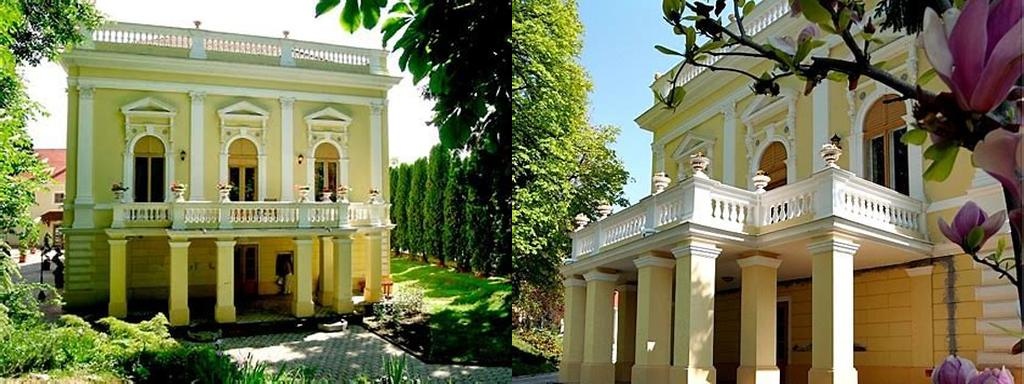
Puchner-kastély sits quietly in the picturesque Hungarian countryside, tucked away in the village of Bikal. Unlike the opulent castles of Western Europe or the world-famous royal palaces lining the Danube in Budapest, this enchanting estate feels more like a secret—the kind of place you’d stumble upon while rambling down winding rural roads framed by fields and whispering woods. The journey to Bikal might tempt you to question whether you’re even headed to a castle at all, but the anticipation is half the fun. When you finally catch a glimpse of the castle through the trees, its creamy yellow walls and invitingly classic silhouette prompt a spontaneous, delighted pause.
Built in 1846, Puchner-kastély is intimately tied to the story of the Puchner family, who originally hailed from what is now Austria. The Puchners were no ordinary landowners; their legacy threads its way through the turbulence and triumphs of the 19th and 20th centuries. Earl József Puchner, whose vision commissioned the castle, blended contemporary fashion with enduring Central European traditions in its architecture. What you get is a harmonious balance—the stately elegance in the neoclassical lines of the main manor, softened by the deep-green park filled with centuries-old trees. Inside, you’ll find a grandeur that is impressive without ever feeling presumptuous: gilded mirrors leaning above marble hearths, intricate wooden balustrades, and a series of sunlit drawing rooms that still retain just a trace of 19th-century mystery.
If you’re the type of traveler who relishes stories, Puchner-kastély unfurls its history generously. During the socialist era, the castle shifted roles from dazzling family home to public institution—a fate shared by many Hungarian estates. What makes this place extraordinary, however, is the care with which its history has been preserved and interpreted. You can almost imagine the rustle of ballgowns in the foyer or the quiet after-dinner conversations in the paneled study. For Hungarian history enthusiasts, tracing the timeline from the Ottoman wars (when the region itself became a patchwork of noble landholdings) to twentieth-century land reforms offers plenty of intrigue. But even for visitors who just enjoy the atmosphere of grand houses, wandering these halls feels evocative and strangely inviting.
One of the castle’s most enchanting marvels is the sprawling parkland—a series of carefully tended gardens that extend to the horizon. You might catch sight of a family of deer grazing at dusk, or stumble upon an ornamental pond rippling quietly under a willow tree. It’s not rare to see guests, young and old, picnicking on the lawns or taking an afternoon stroll with the fragrance of lavender drifting by. The park is dotted with arresting sculptures and benches, perfect for reading a few pages of a novel, or simply letting your mind wander as the castle’s pale stone keeps silent watch overhead. For children, there’s a palpable sense of adventure; you half-expect a prince or princess to emerge from behind the next hedgerow. If you’re visiting in spring or summer, the wildflowers add a vibrant, unexpected dash of color—making every walk feel a little enchanted 🏰.
By far, one of the most surprising aspects of Puchner-kastély is that it’s evolved far beyond its roots as a noble residence. Today, it forms the heart of a unique experience attraction that’s unlike anything else in Hungary. The estate is famous for its themed accommodations—imagine spending a night in a room styled after a medieval lord’s chambers or staying in a secret garden suite. Then there’s the “Medieval Adventure Park,” a sprawling, hands-on part of the property where visitors can try their hand at archery, jousting, blacksmithing, or baking rustic Hungarian breads in a centuries-old oven. Costumed actors and lovingly detailed sets make it easy to lose yourself in make-believe for an afternoon. But even if that’s not your style, the experience is delightfully genuine and accessible; there’s a sense that this is play for the sake of play, not performance.
Hungry after all that activity? The on-site restaurants serve up regional dishes made with local ingredients. Don’t miss sampling a hearty bowl of bográcsgulyás (Hungarian kettle goulash) or the fragrant pastries that seem tailor-made for lingering over coffee in the castle’s shaded courtyard. And if you visit during one of Bikal’s periodic cultural festivals, you’re in for an immersive treat: folk dancers, live music, and stalls selling handcrafted goods transform the park into a colorful, living tableau.
Ultimately, Puchner-kastély is the kind of destination that feels welcoming whether you’re a history buff, family traveler, or simply someone looking for a quiet yet memorable escape. What sets it apart isn’t just its beauty or its creative offerings, but the feeling of intimacy that lingers long after you leave. When you stand near the old wrought-iron gates at dusk, watching as the skies shift from lavender to inky blue above the park, you’ll understand why people who find this castle often return—carrying home memories as rich, layered, and surprising as Bikal itself.





